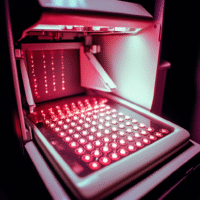Understanding the TUXEDO-3 Trial Results
The TUXEDO-3 trial studied a new treatment called Patritumab deruxtecan (HER3-DXd) for patients with advanced non-small-cell lung cancer (NSCLC) who also have brain metastases. This means the cancer has spread to the brain. Here’s what the results mean for patients and clinics.
What Worked?
- Out of 20 patients, 6 (30%) showed improvement in their brain tumors after treatment with HER3-DXd.
- This treatment could be a new option for patients with brain metastases from NSCLC.
What Didn’t Work?
- Not all patients responded to the treatment; 70% did not see improvement.
- Some patients experienced side effects, including nausea and fatigue.
How Does This Help Patients or Clinics?
- HER3-DXd may provide a new treatment option for patients with limited choices.
- Clinics can offer this treatment to patients with specific types of NSCLC and brain metastases.
Real-World Opportunities
- Hospitals can start using HER3-DXd for eligible patients with brain metastases.
- Doctors can discuss this new option with patients who have not responded to other treatments.
Measurable Outcomes
- Clinics should track how many patients respond to HER3-DXd.
- Monitor side effects and overall patient health during treatment.
AI Tools for Support
- AI can help identify patients who may benefit from HER3-DXd based on their medical history.
- AI tools can assist in monitoring patient responses and side effects during treatment.
Step-by-Step Plan for Clinics
- Start by reviewing patient records to identify those with advanced NSCLC and brain metastases.
- Discuss HER3-DXd as a treatment option with eligible patients.
- Begin treatment with a small group of patients and monitor their responses closely.
- Gather data on treatment outcomes and side effects to refine the approach.
- Gradually expand the use of HER3-DXd as more data becomes available.
For more detailed information about the research, you can visit this link.



























